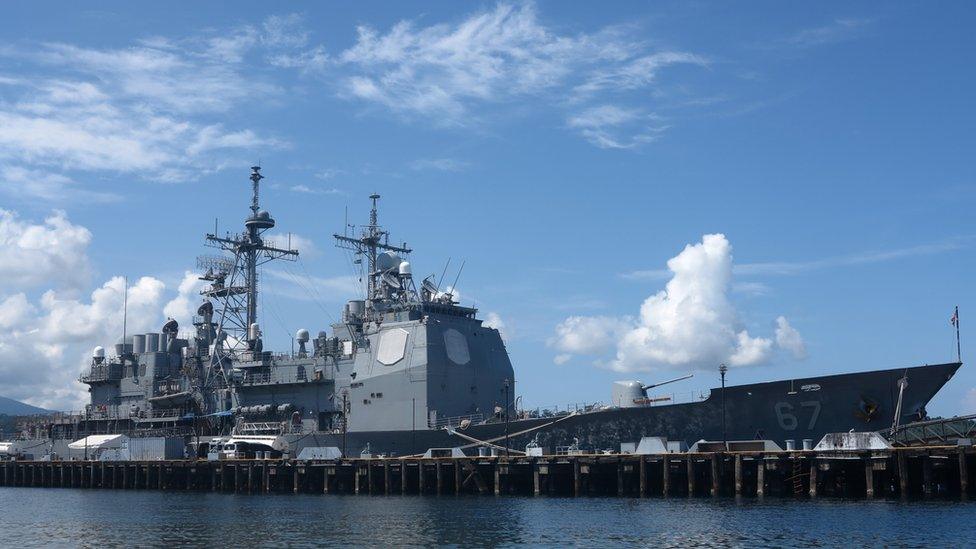Sabina Shoal: The new flashpoint between China and the Philippines
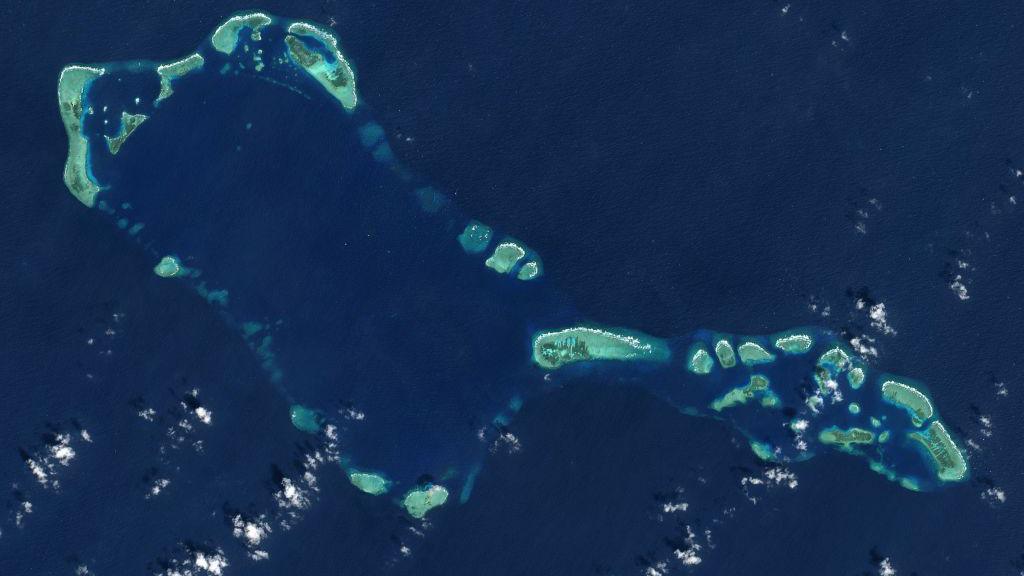
Sabina Shoal is located in the oil-rich Spratly Islands of the South China Sea
- Published
A new flashpoint has emerged in the ongoing maritime dispute between China and the Philippines, with both countries clashing over yet another spot in the South China Sea.
Both China and the Philippines have staked their claims on various islands and zones in the Sea - their dispute increasingly escalating over the years with more vessel collisions, scuffles, and allegations of armed threats.
But last week, things came to a head when Beijing and Manila's vessels collided near the Sabina Shoal- both accusing the other of ramming them on purpose.
The shoal, claimed by China as Xianbin Jiao and as Escoda Shoal by the Philippines, is located some 75 nautical miles from the Philippines' west coast and 630 nautical miles from China.
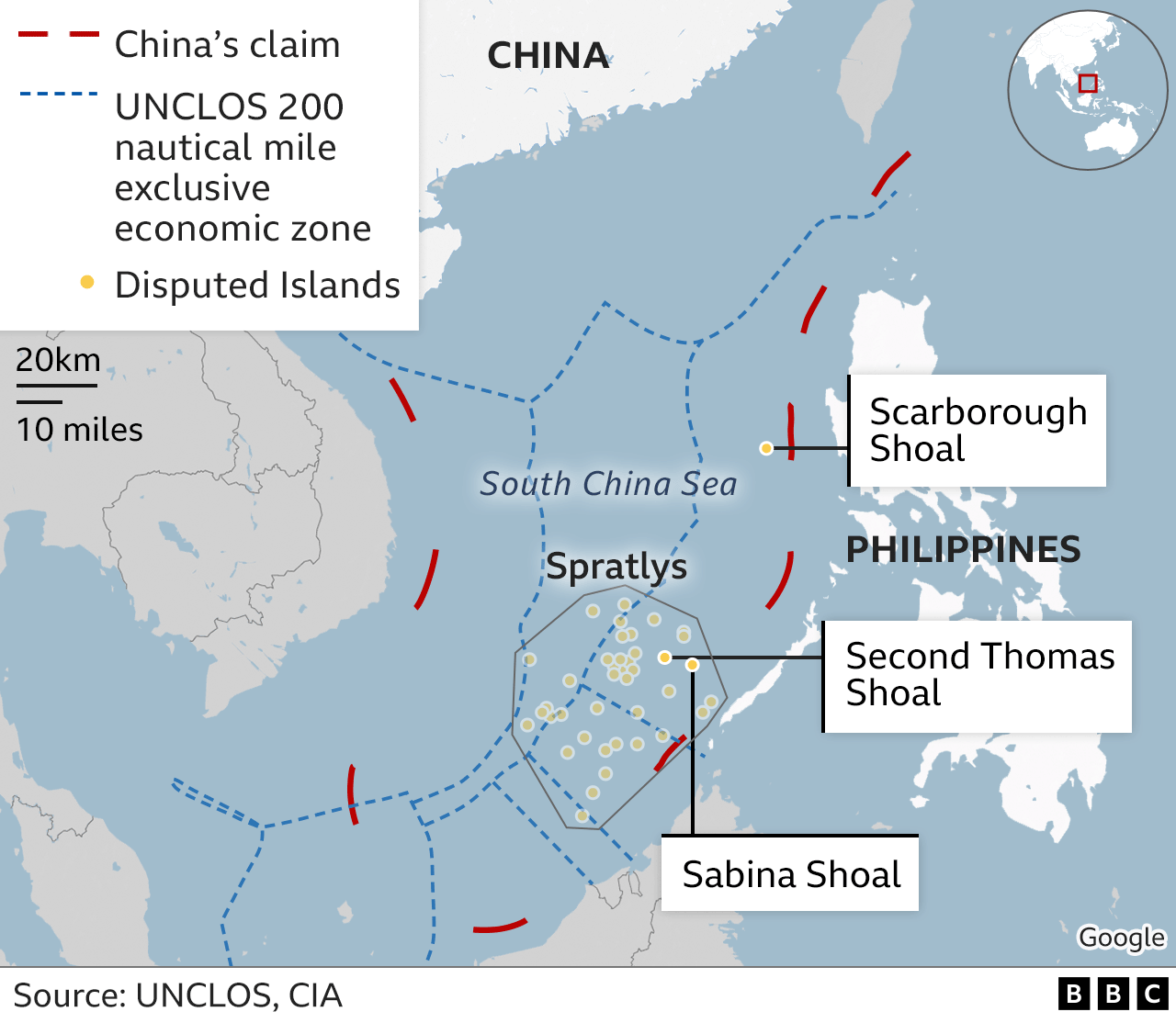
What's happened at the Sabina Shoal?
On 19 August, several Chinese and Philippine vessels collided near the shoal in the disputed Spratly Islands - an area rich in oil and gas, which has been claimed by both countries for years.
The Chinese coast guard said that the Philippine vessel "deliberately collided" into them, while the Philippines said the Chinese vessels were conducting "aggressive manoeuvres".
A second round of collisions took place on Sunday, with both sides once again blaming each other. Several other countries including the UK, Japan, Australia and South Korea, as well as the EU, have criticised China's actions.
On Monday, the Philippines said 40 Chinese ships prevented two of their boats from conducting a "humanitarian mission" to restock the Teresa Magbuana, a Philippine coast guard ship deployed months earlier to the shoal.
China has defended its actions saying it acted lawfully and its "manoeuvres on the spot were professional and appropriate".
Filipino Authorities eventually sent over supplies by helicopter - the Teresa Magbuana is a modern naval vessel equipped with a helipad.
Watch: Moment Philippines and China collide for a second time at Sabina Shoal
The Philippines suspects China is attempting to reclaim land at Sabina Shoal. It has pointed to underwater mounds of crushed coral on Sabina's sandbars, which its coast guard filmed, saying Beijing is using that material to expand the shoal.
China has repeatedly rejected these accusations, saying they are "groundless" and "unscientific". On Friday authorities released a paper based on research by Chinese scientists, saying the sandbars' formation and development were "in line with natural laws", according to state media.
Philippine authorities sent the Teresa Magbuana to Sabina in April as part of a prolonged presence they plan to maintain at the shoal. Manila sees it as key to their efforts to explore the Spratlys for oil and gas.
China meanwhile sees the presence of the Teresa Magbuana as evidence of the Philippines' intentions to occupy the shoal.
A recent commentary by Chinese state news outlet Xinhua, external pointed to a decrepit World War Two era ship grounded by the Philippines in 1999 on the Second Thomas Shoal, known in Chinese as the Ren'ai Jiao.
A handful of soldiers are still stationed there and require regular rations. For years, the ship has been a source of constant friction between both countries, with China routinely attempting to block re-supply missions to the ship.
"25 years on, it is still there. Clearly, the Philippines is attempting to repeat this scenario at Xianbin Jiao," said the commentary.
"China will never be deceived by the Philippines again."
Is this an escalation in the China and Philippines dispute?
There has been a string of dangerous encounters in recent months as the two sides sought to enforce their claims on disputed reefs and outcrops, including the Second Thomas Shoal and the Scarborough Shoal.
The collisions usually arise from the cat-and-mouse games the boats engage in, as they attempt to chase the other side away.
China has increasingly blasted powerful water cannon and lasers at Philippine ships, with the Filipinos also accusing the Chinese of boarding their boats, leading to scuffles, as well as confiscating items and puncturing their inflatable vessels.
One of the latest accusations from Manila was that Chinese coast guard personnel armed with knives, spears and swords boarded one of their military ships and threatened their soldiers.
"We are struggling against a more powerful adversary," the Philippines defence chief Gilberto Teodoro said on Tuesday, while appealing to the international community to issue "a strong call-out against China".
So far there have been no fatalities, though the Philippines says several of its soldiers have sustained injuries. But President Ferdinand Marcos Jr has warned that any Filipino deaths resulting from China's actions would be considered an "act of war".
China has repeatedly blamed the Philippines and also its ally the US. On Thursday a defence ministry spokesperson said Washington was "emboldening" Manila to make "reckless provocations".
Observers worry the dispute could eventually spark a larger confrontation in the South China Sea.
A previous attempt by the Philippines to get an independent arbitral tribunal to rule on the matter ended with the decision that China had no lawful claims within its so-called nine dash line, the boundary it uses to claim a large swathe of the South China Sea. Beijing refused to participate in the proceedings, and has also refused to recognise the ruling.
But in recent weeks both countries have made an attempt to de-escalate the immediate conflicts out at sea.
Last month they agreed to allow the Philippines to restock the outpost in the Second Thomas Shoal with food, supplies and personnel. Since then this has taken place with no reported clashes.
The incidents at Sabina Shoal however raise the question of whether such attempts at de-escalation are effective when the dispute can simply shift to a new site.
Correction 13 September 2024: This article originally reported that the Philippines attempted to get the UN to arbitrate – it has been updated to reflect that an independent tribunal, in which China refused to participate, ruled on the South China Sea dispute.
Additional reporting by BBC Monitoring.
Related topics
- Published1 May 2024
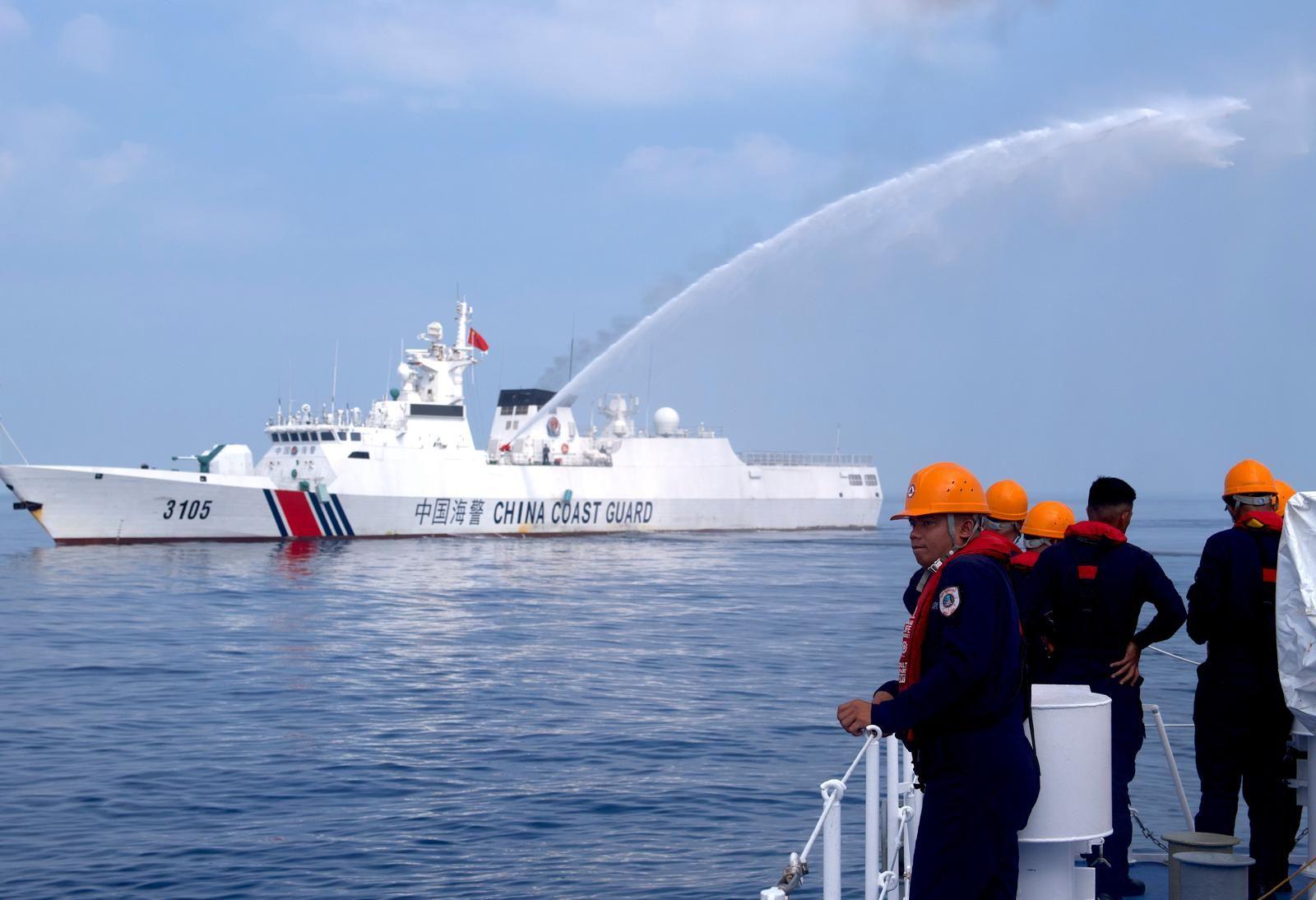
- Published20 June 2024
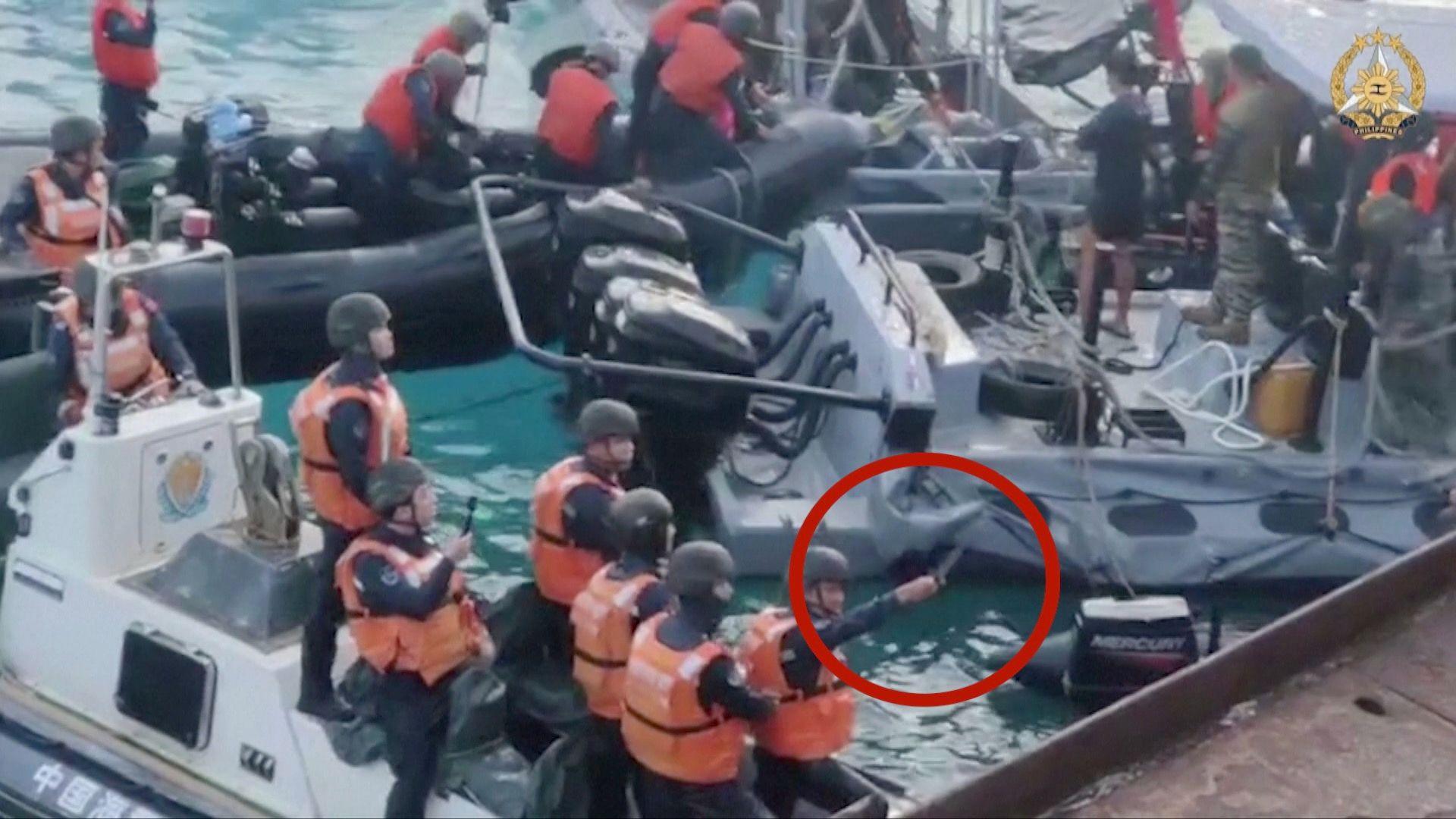
- Published7 July 2023
